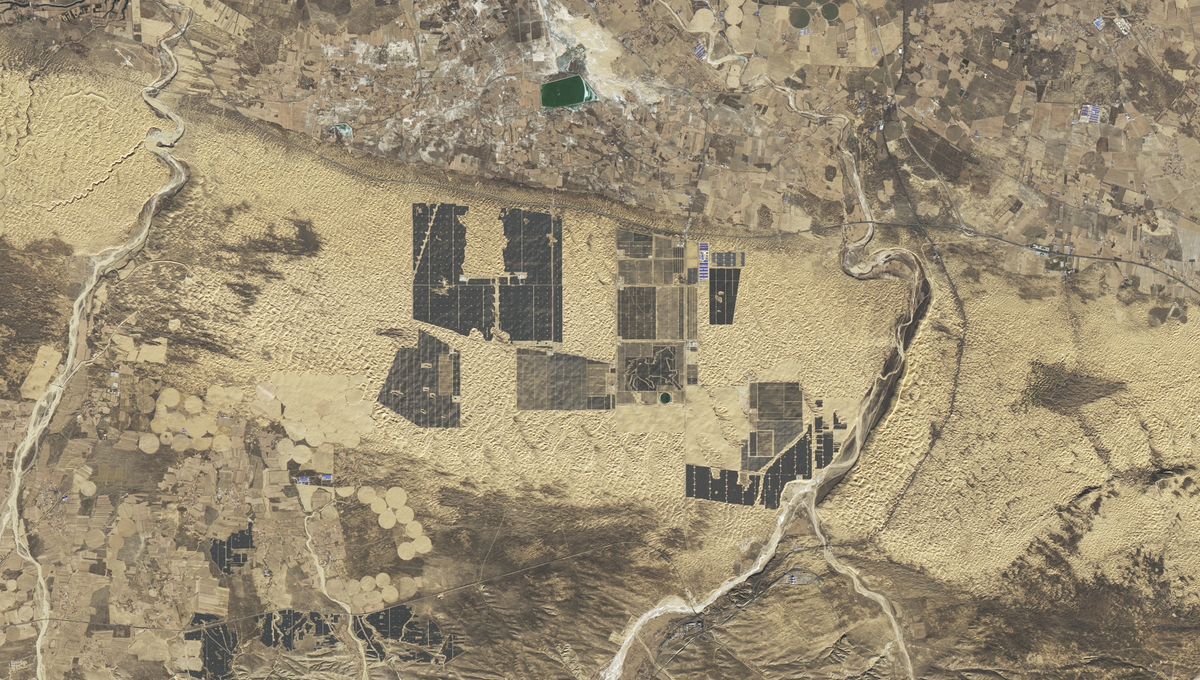
A desert might not be the first place you’d expect to be a hive of activity, but northwestern China’s Kubuqi Desert is currently bucking the trend, as an ambitious project to build a “Solar Great Wall” continues to transform the desolate landscape.
Once completed – expected to be sometime in 2030 – the solar farm will be 5 kilometers (3 miles) wide and stretch for 400 kilometers (250 miles) across the sand. That might seem quite short in comparison to the 21,196-kilometer (13,171-mile) Great Wall of China, but its greatness aims to come from power rather than length.
The maximum generating capacity of the farm is expected to be 100 gigawatts, with 5.42 gigawatts having been installed so far, according to state-owned newspaper China Daily. That capacity will come courtesy of millions of solar panels, soaking up the desert’s estimated 3,100 yearly hours of sunshine.
It’s hoped that upon completion, the vast solar power plant will generate enough electricity to power the country’s capital city, Beijing.
According to China Daily, Beijing consumed 135.8 billion kilowatt hours (kWh) of electricity in 2023. It’s expected that the farm will generate around 180 billion kWh of electricity by 2030; if the capital city’s energy demands don’t stray much further than they are currently, that would be enough to power not just Beijing, but its surrounding areas too. It’s also far more than the annual generation of the world’s largest solar farm (also in China), which stands at a comparatively measly 6.09 billion kWh per year.
China is currently the world’s largest emitter of greenhouse gases, having pumped out 10.8 billion tons of carbon dioxide in 2021. In the Dalad Banner, where part of the Solar Great Wall is being built, it’s estimated that the solar farm could reduce carbon emissions in the region by around 31.3 million tons, Li Kai, an official with the energy administration of Dalad Banner, told China Daily.
It’s also hoped that the solar farm will contribute to ongoing greening and the prevention of further desertification of the Kubuqi Desert, with the project administration aiming to treat nearly 27 million hectares (67 million acres) of desert. This could happen by the solar panels “fixing” the sand, acting as a break for winds that would otherwise allow dunes to move, and providing shade for plants to grow.
The idea isn’t completely unfounded. Once devoid of vegetation due to persistent grazing, nearly 40 years of projects have seen greenery return to one-third of the Kubuqi Desert – 10.7 square kilometers (4.1 square miles) of it in and around the existing Junma Solar Power Station.
Source Link: China Building “Solar Great Wall” That Could Power Beijing And Beyond